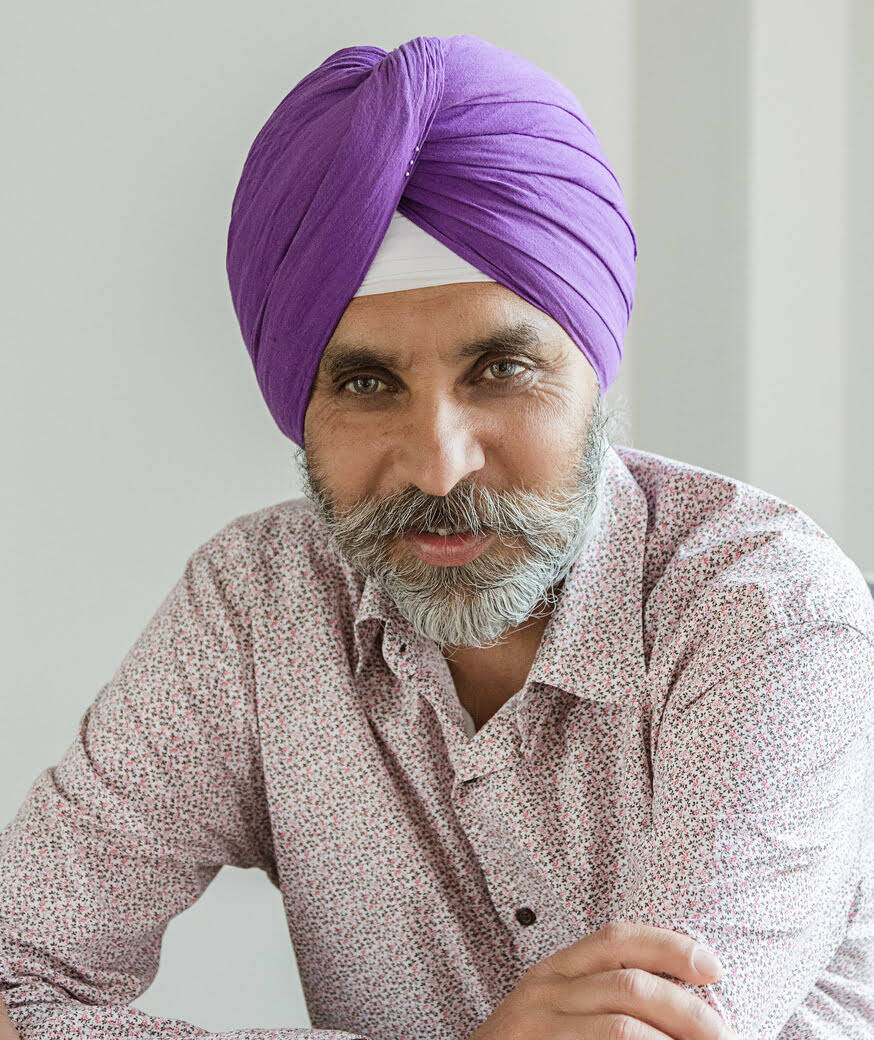With nearly 30 years of experience in the technology sector, Sanjeev Arya has helped several growth-stage companies realize their full potential through his expertise in executive leadership, business development, and go-to-market execution. Sanjeev joined UiPath as Senior Vice President of Growth in 2019 and played a crucial role through the company’s IPO in 2021. Throughout his career, Sanjeev has led cross-functional teams, launched immensely successful products, and established global strategic partnerships across industries. Despite all the success, Sanjeev remains incredibly humble and purpose-driven. He emphasizes how much people can accomplish when working together on a mission, and that successful companies always keep their sights on making a positive impact.
Sanjeev recently spoke with Crew Capital about a variety of topics, including his time at UiPath, his advice to first-time founders, and his new go-to-market model, among others.
Sanjeev’s entrepreneurial experience at UiPath
Prior to joining UiPath, Sanjeev’s career had been focused on technology services and consulting – how he would ultimately end up in a leadership role at a global SaaS business wasn’t always so obvious. Despite this, Sanjeev believes that bringing the right person into an organization from the outside helps energize a company by complementing its existing infrastructure with differing perspectives. As a leader hired into UiPath, Sanjeev embraced company’s vibe and allowed the company to learn from his previous successes as well as failures without having to make the same errors again.
“We look outside to bring people in with a unique perspective, a different experience,” he said. “The attitude that the new person brings in helps, but the failures they’ve endured, the ‘why’ behind those, and their approach to learning from them is even more relevant.”
When joining a growing organization like a pre-IPO UiPath, a leader like Sanjeev must think through impactful questions about what they bring to the table, and how this new relationship will alter the company’s arch. Sanjeev believes a leader needs to generate buy-in on a shared vision, and that begins by forging internal relationships through a compelling narrative.
“You need to invest energy in your story,” he said. “You need to rely heavily on the company objective and the vision with a complimentary picture conveying a story about your new mission for the company. And that gives you the opportunity to test yourselves and your company’s strategic levers. As the product builds, you and your team must be ready with a compelling story for the external world and you would be building external partnerships before you realize.”
Partnerships play a crucial role in Sanjeev’s thinking about building great businesses. Time and again, he pointed to the importance of UiPath’s culture and collaboration as vectors to a successful launch.
“I think internal evangelism, with internal partnerships, is equally important as external evangelism in the market to test the product concept,” he said. “The culture of the company, the allowance to take risks, to go at your own pace and speed, to define and call whatever you want to be called, was really refreshing.”
Finding the “why” for growth-stage startups
Purpose plays a significant role in Sanjeev’s approach to business, and that reverberates in his structuring of GTM strategies. Beyond seeking growth, founders need to clarify the problems they’re solving and the value they offer through their solution.
“When you hit the GTM stage, the ‘what’ is clear — the product, the idea. We’re going to bring something to the market. But why?” he said. “The ‘why’ is very important. The more purposeful, the stronger the ‘why’ is, the more friends you will make on the way and more trust you will create.”
Sanjeev believes that a variety of factors inform GTM strategies: The stage the company is in, the type of product or service it offers, and the goals that it wants to achieve. No two companies are the same, and no two problems are the same. It’s only once the team fully grasps the problem it wants to solve that it can genuinely build the solution.
“There is no silver bullet. You need to get it. You need to understand. You need to apply your thinking. You need to rally the team with you to draft the problem. Then, you can start thinking about the solution,” Sanjeev said.
The new, always-connected GTM model
In Sanjeev’s view, startups historically have relied on a “waterfall model” of iteration and improvement, while focusing on their strengths. In a world where change is constant, and technology moves faster than ever, that paradigm must evolve. Sanjeev believes in an “always connected” GTM model that constantly adapts and remains interconnected with other functions.
“It used to be a linear model 10, 20 years ago. If there’s a need in the market, you fill it: You research, you build, you test it and launch it, and see where it goes over the 12/24 month period,” he said. “Today, all these stages are agile. These stages are not leading to the next in the lifecycle once but they are always feeding each other continuously. It is now a cycloidal motion than linear. That is because of the global nature of modern businesses, which are run by hyper connected, well informed, and tech savvy people. Therefore, there’s always a feedback loop from one stage to another to bring bi-directional enrichment keeping in synch with the influencing forces.”
Startup founders may find themselves asking where to start in this new paradigm: Value proposition, sales strategy, marketing strategy, customer success strategy, and product evolution all feed into one another all the time. Each stage needs to come into effect at the right time. Sanjeev emphasizes identifying the “why” behind each stage’s impact and being intentional with where to start. Startups can and should launch a variety of motions in tandem to see how best to plug in and be in synch with the always-connected target segments.
“It’s not only the Business plan. It’s the Marketing plan. It’s the Sales plan. It’s the Customer Success plan. It’s the Product plan. It’s the competitive angle you need to focus on. And the must have Partnerships plan,” he said. “All these plans have to kick off in some shape and form on day 0. Some could be placeholders when you start but strategize around each continuously even if you think you are going to invest in them at the right time. Cheat sheet – Do not leave the Customer Success plan too late in the cycle i.e. post customer acquisition. Focus on it as you would on the Marketing plan on timing and investment fronts.”
Expanding into Europe
For founders in the United States, the question of how and when to expand into Europe can feel daunting. Sanjeev believes founders must ask themselves, with respect to their core market first, what have they learned? Which sales motions work, and which do not for their product proposition? Have they groomed their company to be adaptable? Expansion to a new market requires resilience and flexibility, and these first must be sorted out in their core market before expanding.
“Of course, you will hire specialists in that region who have direct experience there, but do not force your way of working on them,” he said. “Let it unfold a little bit. You need to learn the dynamics of that new market. You need to learn the culture and behaviors of that new market. You need to know how buying and selling works there.”
Sanjeev’s time at UiPath emphasized the need for flexibility, and his ability to succeed in adapting to new markets.
“UiPath itself is a great example,” he said. “We had a slightly different models and structures in different geographies, EMEA, the Americas, as well as the Far East and APAC. I think whatever gives that regional or geographical organization a path to success, we should fuel that. While the corporate foundation provides a framework, local empowerment brings success.”
Enterprise vs. SMB clients
Sanjeev’s collaboration with a wide range of businesses has provided him with a deep perspective into how startups interact with customers, and how those interactions vary. His involvement in advising businesses as clients has ranged from consulting to serving as a mentor in fellowships such as Unreasonable. Enterprise and SMB clients present different challenges, and each requires a founder to consider the gravity of that business.
“Enterprises will have multiple touch points. They’ll have multiple decision points, influence points, and most likely a very well-structured process of going about the entire business,” Sanjeev said. “With SMBs, they can be faster to do business with. It could be just a few touch points, and if you’re able to showcase the value of a strategic decision, you will move forward due to their proclivity to move fast. SMBs also have a different way of looking at a business, purely because of their size and market reach. They both offer different opportunities.”
One of the greatest differences to consider in selling to enterprises vs. SMBs is how much gravity a client holds and how that gravity dictates a startup’s strategy. For example, a startup might overhaul its product offering or sales strategy to cater to one enterprise client if that client represents the majority of the startup’s business or target. A startup working with SMBs, on the other hand, might only tweak its product or sales strategy for clients, but won’t significantly alter for just one client. Different scales and different opportunities define a startup’s approach and response.
“On the Enterprise side you might end up customizing your product or offerings to a very high degree to align with or fit into their very large technology estates. On the SMB side, that may not be,” he said. “Out of the box usually should work because it’s a quick use-case, mostly end to end. They will test how far your product can go and bring end-to-end capabilities.”
Sanjeev also believes that clients care most about how a startup adds value, whether that’s in efficiency, quality, or quantity. The ability to convey that value proposition in a crowded landscape means messaging matters more than ever — simply undercutting competitors on price to entice customers isn’t enough to build a sustainable business.
“If we are continuously throwing discounts, promotions and campaigns just to build up the revenue part of it, yes we do it, companies do it, but that’s only one part of the story,” he said. “For the long haul, we need to start promoting value and the real impact on various actors and elements of our ecosystem.”
The hype around generative AI
Sanjeev has been around long enough to see massive shifts in technology. Generative AI has been a hot topic in recent times, and Sanjeev occasionally weighs in on GenAI on X, formerly known as Twitter. He believes leaders need to diligently consider new technology without being swept up in the hype.
“Technology will continue to change. It’s not going to stop evolving. So, we cannot say we mastered the art of a technology, or a version of a technology, and then get comfortable. We need to continuously evolve with it so that we are not disrupted,” he said.
Sanjeev noted that while many companies are dabbling in GenAI, a few are working quietly on strong solutions in order to industrialize the technology. He sees those players as being able to differentiate themselves, while others are simply caught in the moment.
“Tomorrow, there will be something new on the hype cycle, and we will get influenced by the clamor,” Sanjeev said. “The only way to business growth is to really deliver meaningful outcomes and at scale.”
Advice to first-time founders
Sanjeev believes in three core tenets for success: Partnership, profitability, and purpose. Partnerships remain a consistent theme in nearly any conversation with Sanjeev. The relationships he has forged have allowed him to build and implement successful partner strategies throughout his career.
“The story from your side has to be really strong, i.e. something that the partner cannot live without [that] changes the partner’s business now that your product and your value proposition is part of their briefcase,” Sanjeev said. “Until the last year or two, companies were seeking individual competitive advantage. From here onwards, we should aim to build on collaborative advantage.”
For the past few years, companies emphasized a “growth at all costs” mentality. Sanjeev believes that focus on growth alone makes you lose sight of the ultimate goal: Profitability.
“As you go about scaling the business, go for growth, but not at all costs. Not at any cost. Go for growth with a roadmap to profitability. Even if it’s 3, 5 years, whatever it is. But that culture of keeping an eye on cost and profitability is very, very important. It will start to hurt if you don’t have a plan for it,” he said.
More than anything, Sanjeev believes a founder must see the bigger picture and pursue building a product or service that makes a difference. A product or service that provides a positive impact will be one built for the long haul.
“Focus on the purpose,” Sanjeev said. “Why are you doing it? Test yourself. Quiz yourself. Challenge yourself every day with the Why? And then focus on sustaining your mission. It’s a marathon. It’s not a sprint. Don’t tire yourself out unnecessarily by looking at others. If you believe in your idea and you think it’s credible enough and it can stand on its feet, just go wholeheartedly with it.”
Related Articles

Mark Sachleben: Braving the Dot-com Bubble and Soaring in Silicon Valley’s Surge
Mark Sachleben recently sat down with Crew Capital's Dylan Reider to discuss his career as a CFO, learnings from surviving…

Sasha Reminnyi: Leading a Ukrainian Startup to Acquisition
In our most recent discussion in our ongoing interview series, we had the pleasure to speak to Sasha Reminnyi. Sasha…

Mihai Faur, CIO of UiPath, on Building Strategic Finance Teams
Crew Capital recently hosted Mihai Faur for a roundtable discussion with our portfolio companies. He shared insights on scaling finance…








